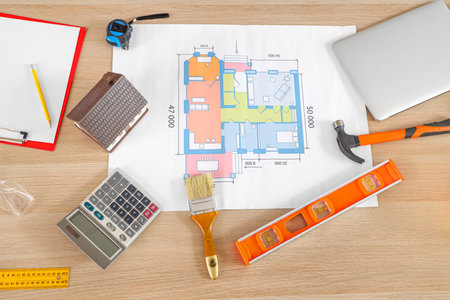1. Understanding Minimalist Home Staging
Minimalist home staging is more than just a trend—its a design philosophy that embraces the idea of “less is more.” Instead of filling a house with lots of furniture and decor, minimalist staging focuses on clean lines, open space, and natural light. This approach highlights a homes best features and helps potential buyers picture themselves living there without distractions.
Why Minimalism Works in Home Staging
For many Americans, the appeal of minimalism comes from the desire for simplicity and calm in their daily lives. Clutter-free spaces feel larger, brighter, and more inviting. When buyers walk into a minimalist-staged home, theyre greeted by rooms that feel fresh and open—not crowded or overwhelming.
The Core Principles of Minimalist Staging
| Principle | Description |
|---|---|
| Simplicity | Keep furnishings and decor to a minimum; focus on essentials only. |
| Functionality | Every piece has a purpose and is carefully chosen for the space. |
| Neutral Palette | Soft whites, beiges, and grays let natural light shine through. |
| Open Space | Leave plenty of room to move around; showcase floor space. |
| Natural Light | Maximize sunlight by using sheer curtains or keeping windows bare. |
The American Buyer’s Perspective
In the U.S., many homebuyers are looking for spaces that feel easy to maintain, uncluttered, and full of light. Minimalist staging taps into these preferences by making homes feel modern yet timeless. It allows people to imagine their own belongings in the space—and that connection can make all the difference when it comes to selling your home quickly and for top dollar.
2. Declutter with Purpose
Decluttering is more than just tidying up—it’s a strategic step in minimalist home staging that sets the foundation for a visually appealing and inviting space. By removing unnecessary items, you create clean lines and open areas that help buyers picture themselves living in your home. Here’s how to approach decluttering with intention:
Assess Each Room
Walk through every room as if you were seeing it for the first time. Notice what stands out: overcrowded shelves, extra furniture, or personal collections? The goal is to let the room breathe, not feel cramped or chaotic.
Sort Items Thoughtfully
| Category | Action | Examples |
|---|---|---|
| Keep | Essential pieces that highlight space and function | Sofa, dining table, neutral artwork |
| Store Away | Personal items and seasonal decor | Family photos, holiday decorations, kids’ toys |
| Remove Completely | Unnecessary or bulky items that crowd the room | Extra chairs, oversized rugs, piles of magazines |
Create Clean Lines and Open Spaces
The magic of minimalist staging lies in its simplicity. Arrange furniture to maximize flow—think wide walkways and uncluttered surfaces. Choose a few statement pieces instead of many small decorations. This helps buyers focus on the architecture and potential of each space rather than getting distracted by clutter.
Pro Tip: Less Is More Visual Impact
A single vase on a coffee table or one large piece of art can make a stronger impression than multiple smaller items. Open spaces invite imagination, allowing buyers to envision their own style filling the home.
Your Decluttering Checklist:
- Edit closets to show off storage space—aim for at least 30% empty.
- Clear kitchen counters except for one or two attractive essentials.
- Simplify bookshelves by removing excess books and decor.
- Pare down bathroom counters to only the basics.
- Remove pet items and visible trash bins from sight.
This purposeful approach to decluttering transforms your home into a blank canvas—one where less truly becomes more in the eyes of potential buyers.

3. Neutral Palettes and Natural Light
Why Neutrals Matter in Minimalist Home Staging
In the world of minimalist home staging, choosing the right color palette is everything. Soft, neutral colors—think shades of white, beige, gray, and greige—create a calm backdrop that appeals to most American buyers. These hues don’t distract from a home’s best features; instead, they let architectural details and natural light shine.
How Neutrals Make Spaces Feel Larger
When you use lighter tones on walls, ceilings, and even furniture, rooms instantly look more open and airy. This visual trick is especially helpful in smaller spaces or homes with cozy floor plans. Neutral palettes bounce light around a room, making it feel bigger than it actually is—a smart move in today’s competitive housing market.
The Power of Natural Light
Maximizing natural light is a key trend in U.S. home staging right now. Large windows, sheer curtains, and strategically placed mirrors work together to flood your space with sunlight. The result? A bright, welcoming atmosphere that feels both modern and comfortable.
Tips for Maximizing Light and Neutral Appeal
| Strategy | Description |
|---|---|
| Paint Walls Light Colors | Use soft whites or pale grays to reflect more light and create an airy vibe. |
| Sheer Window Treatments | Swap out heavy drapes for sheer curtains to let sunlight stream in. |
| Mirrors | Place mirrors opposite windows to double the impact of natural light. |
| Edit Decor | Keep accessories minimal and stick to neutral tones for a cohesive look. |
| Natural Materials | Add texture with wood, linen, or jute in light colors for warmth without clutter. |
By focusing on neutral palettes and maximizing natural light, you’ll make your home feel inviting and spacious—two qualities that are always in demand among today’s American homebuyers.
4. Quality Over Quantity in Furnishings
When it comes to minimalist home staging, less truly is more—especially when it comes to furniture. Instead of filling every corner with chairs, tables, or decorations, Americans are embracing a curated approach that values intentional design and high-quality pieces. This mindset isnt just about style; its about making your home feel more inviting, functional, and sophisticated to potential buyers.
Why Fewer Pieces Matter
Clutter can make even a spacious room feel cramped. By selecting fewer, well-designed furnishings, you instantly create an open atmosphere that encourages buyers to imagine their own lives in the space. Every piece should serve a clear purpose and add visual appeal. Think of it like telling a story with only the most essential words.
The American Eye for Intentional Design
In the U.S., theres a growing appreciation for interiors that are thoughtfully arranged rather than overstuffed. People want spaces that feel calm and organized but also reflect smart choices. Minimalist staging taps into this cultural trend by showcasing:
- Functionality: Each item has a job—be it comfort, storage, or style.
- Sophistication: Well-crafted pieces stand out on their own without needing extra decoration.
- Flow: Open layouts highlight movement and natural light, which are top priorities for many American buyers.
Smart Choices: Comparing Furniture Approaches
| Minimalist Staging | Traditional Staging | |
|---|---|---|
| Number of Pieces | Few (select essentials) | Many (to fill space) |
| Design Focus | Intentional & cohesive | Mix of styles & sizes |
| Visual Impact | Open & airy | Busy & sometimes cluttered |
| Buyer Impression | Sophisticated, modern, inviting | Lived-in but less memorable |
Selecting Standout Pieces
If youre aiming for minimalism, focus on furniture that doubles down on both form and function. Opt for a statement sofa with clean lines, a sleek dining table, or accent chairs in timeless fabrics. Remember: the goal is to let each piece breathe so its design can shine. Avoid crowding surfaces with accessories—instead, allow one or two eye-catching items to anchor the room.
This method not only highlights your homes best features but also connects with buyers looking for intentionality in their next living space. By prioritizing quality over quantity, you communicate care, style, and an understanding of what makes a house feel like home.
5. Depersonalize to Universal Appeal
When staging your home with a minimalist mindset, one of the most important steps is depersonalizing your space. This means removing anything that makes the house feel like it belongs to you specifically, so potential buyers can easily imagine themselves living there. Here’s how you can achieve that fresh, welcoming vibe that appeals to everyone:
Why Depersonalization Matters
Buyers want to picture their own lives in a new home, not get distracted by someone else’s memories or style. Personal items and bold décor choices can make rooms feel smaller or busier, but minimalism opens up the space, letting buyers focus on the features of the house itself.
Simple Steps to Depersonalize Your Home
| Personal Items to Remove | Minimalist Alternatives |
|---|---|
| Family photos and portraits | Neutral artwork or empty walls |
| Fridge magnets and kids’ drawings | Clear fridge doors and simple note boards |
| Trophies, awards, diplomas | Clean shelves or decorative vases |
| Boutique toiletries and personal beauty products in bathrooms | Fresh white towels and a single soap dispenser |
| Personalized bedding or monogrammed pillows | Crisp, solid color linens and throw pillows |
| Collections (books, figurines, memorabilia) | A few design magazines or greenery for accent |
Tips for Creating an Inviting, Open Atmosphere
- Edit ruthlessly: Less really is more. Keep only what adds beauty or function to each room.
- Create neutral zones: Choose soft colors and simple designs for rugs, curtains, and furniture.
- Add life with plants: A single green plant in a stylish pot adds freshness without clutter.
- Open up surfaces: Clear off countertops, tables, and desks so spaces look larger and uncluttered.
- Hide everyday items: Stash remote controls, mail, shoes, and pet supplies out of sight during showings.
The Minimalist Mindset: Think Hotel Suite Vibes
Your goal is to make every room feel like a peaceful hotel suite—inviting but not lived-in. When buyers walk through your door, they should see possibility, not personality. With these depersonalizing techniques, you’ll help your home appeal to a wide range of American buyers looking for their next fresh start.
6. Finishing Touches: Art and Greenery
When it comes to minimalist home staging, every detail counts—especially the finishing touches. While the idea is to keep things simple, a few well-chosen pieces of art and some greenery can make your space feel inviting and fresh without making it look busy. These elements bring warmth, color, and personality to a room, helping buyers imagine themselves living there.
Art: The Power of One or Two Pieces
Instead of filling every wall with artwork, choose one or two standout pieces for each main area. Go for art that matches your home’s color palette and style. Abstract paintings, black-and-white photography, or even a simple framed print can create a focal point without cluttering the space.
| Room | Recommended Art Type | Placement Tip |
|---|---|---|
| Living Room | Large abstract canvas | Above the sofa or mantle |
| Bedroom | Serene landscape photo | Over the headboard |
| Dining Area | Modern print or small gallery set | Main wall at eye level |
Greenery: Bringing Life Into Your Home
A touch of nature goes a long way in making a house feel like a home. You don’t need a jungle—just one or two potted plants or a simple vase with fresh flowers can add energy and life. Think low-maintenance options like succulents, snake plants, or a classic pothos. Place them where they catch natural light but don’t block walkways or views.
Quick Guide: Less Is More with Greenery
| Plant Type | Best Location | Cultural Vibe |
|---|---|---|
| Pothos Plant | Shelf or corner table | Fresh & welcoming |
| Succulent Mix | Coffee table or bathroom counter | Modern & easy-care |
| Bouquet of Fresh Flowers | Dining table or entryway console | Classic & cheerful |
The Balance: Visual Interest Without Overwhelm
The secret is in restraint. Both art and greenery should serve as accents, not distractions. When you use these elements sparingly, they highlight your home’s best features while keeping the focus on spaciousness and light—the heart of minimalist staging.
7. Why Less Sells for More
In todays fast-paced U.S. real estate market, first impressions are everything. Minimalist home staging taps into buyers desires for clean, open, and inviting spaces. By keeping things simple and clutter-free, sellers can highlight a homes best features and help buyers easily imagine their own lives unfolding there.
The Benefits of Minimalism in Home Staging
| Benefit | How It Helps Sell Faster & Higher |
|---|---|
| Enhanced Visual Appeal | Open spaces and neutral palettes create a fresh, modern look that appeals to a wider range of buyers. |
| Easier Buyer Visualization | Fewer personal items make it easier for buyers to picture their own furniture and lifestyle in the home. |
| Spotlights Key Features | Minimal décor draws attention to architectural details and spaciousness rather than distractions. |
| Photos Stand Out Online | Clean, uncluttered rooms photograph better—crucial when most buyers start their search on Zillow or Redfin. |
| Creates a Move-In Ready Feel | Simplicity suggests less work is needed, making the home feel turnkey and desirable. |
Why It Works in the U.S. Market
American buyers often value homes that feel fresh, organized, and easy to personalize. With so many listings competing for attention, minimalist staging makes your property shine both online and during in-person showings. This approach helps homes spend less time on the market and can even spark bidding wars, leading to higher offers from eager buyers.
Design Tip:
Stick to neutral colors, streamlined furnishings, and just a few well-chosen accents. Think of it like setting the stage for a lifestyle—inviting but not overwhelming.

